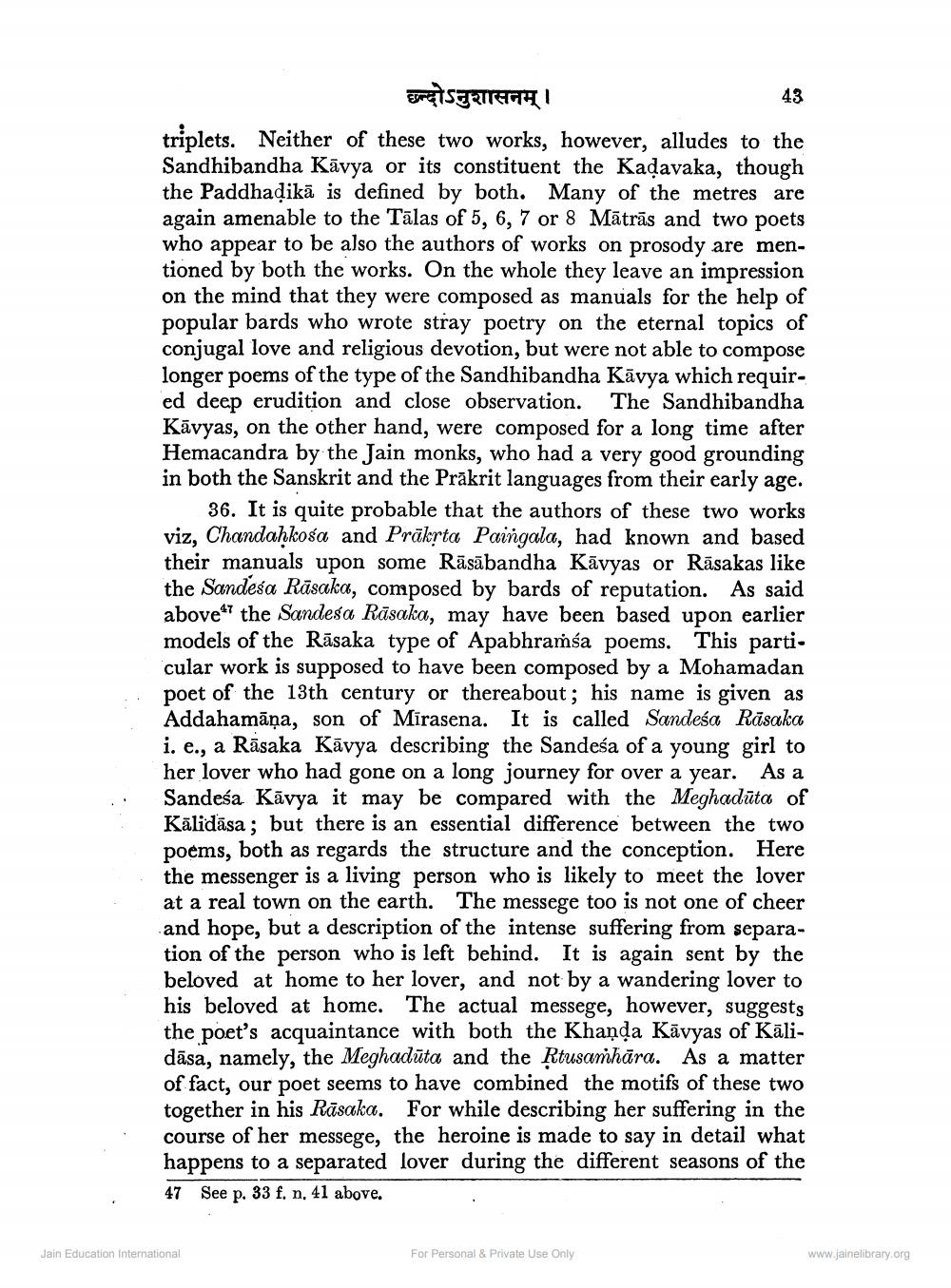________________
43
छन्दोऽनुशासनम् । triplets. Neither of these two works, however, alludes to the Sandhibandha Kāvya or its constituent the Kadavaka, though the Paddhaờikā is defined by both. Many of the metres are again amenable to the Tālas of 5, 6, 7 or 8 Mātrās and two poets who appear to be also the authors of works on prosody are mentioned by both the works. On the whole they leave an impression on the mind that they were composed as manuals for the help of popular bards who wrote stray poetry on the eternal topics of conjugal love and religious devotion, but were not able to compose longer poems of the type of the Sandhibandha Kāvya which required deep erudition and close observation. The Sandhibandha Kāvyas, on the other hand, were composed for a long time after Hemacandra by the Jain monks, who had a very good grounding in both the Sanskrit and the Prākrit languages from their early age.
36. It is quite probable that the authors of these two works viz, Chandahkoša and Präkrta Paingala, had known and based their manuals upon some Rāsābandha Kāvyas or Rāsakas like the Sandesa Rāsaka, composed by bards of reputation. As said above the Sandesa Rāsaka, may have been based upon earlier models of the Rāsaka type of Apabhramsa poems. This parti. cular work is supposed to have been composed by a Mohamadan poet of the 13th century or thereabout; his name is given as Addahamāņa, son of Mirasena. It is called Sandeśa Rāsaka i. e., a Rāsaka Kāvya describing the Sandeśa of a young girl to her lover who had gone on a long journey for over a year. As a Sandeśa Kāvya it may be compared with the Meghadūta of Kālidāsa; but there is an essential difference between the two poems, both as regards the structure and the conception. Here the messenger is a living person who is likely to meet the lover at a real town on the earth. The messege too is not one of cheer and hope, but a description of the intense suffering from separation of the person who is left behind. It is again sent by the beloved at home to her lover, and not by a wandering lover to his beloved at home. The actual messege, however, suggests the poet's acquaintance with both the Khanda Kavyas of Kālidāsa, namely, the Meghadūta and the Rtusamhāra. As a matter of fact, our poet seems to have combined the motifs of these two together in his Rāsaka. For while describing her suffering in the course of her messege, the heroine is made to say in detail what happens to a separated lover during the different seasons of the 47 See p. 33 f. n. 41 above.
Jain Education International
For Personal & Private Use Only
www.jainelibrary.org




